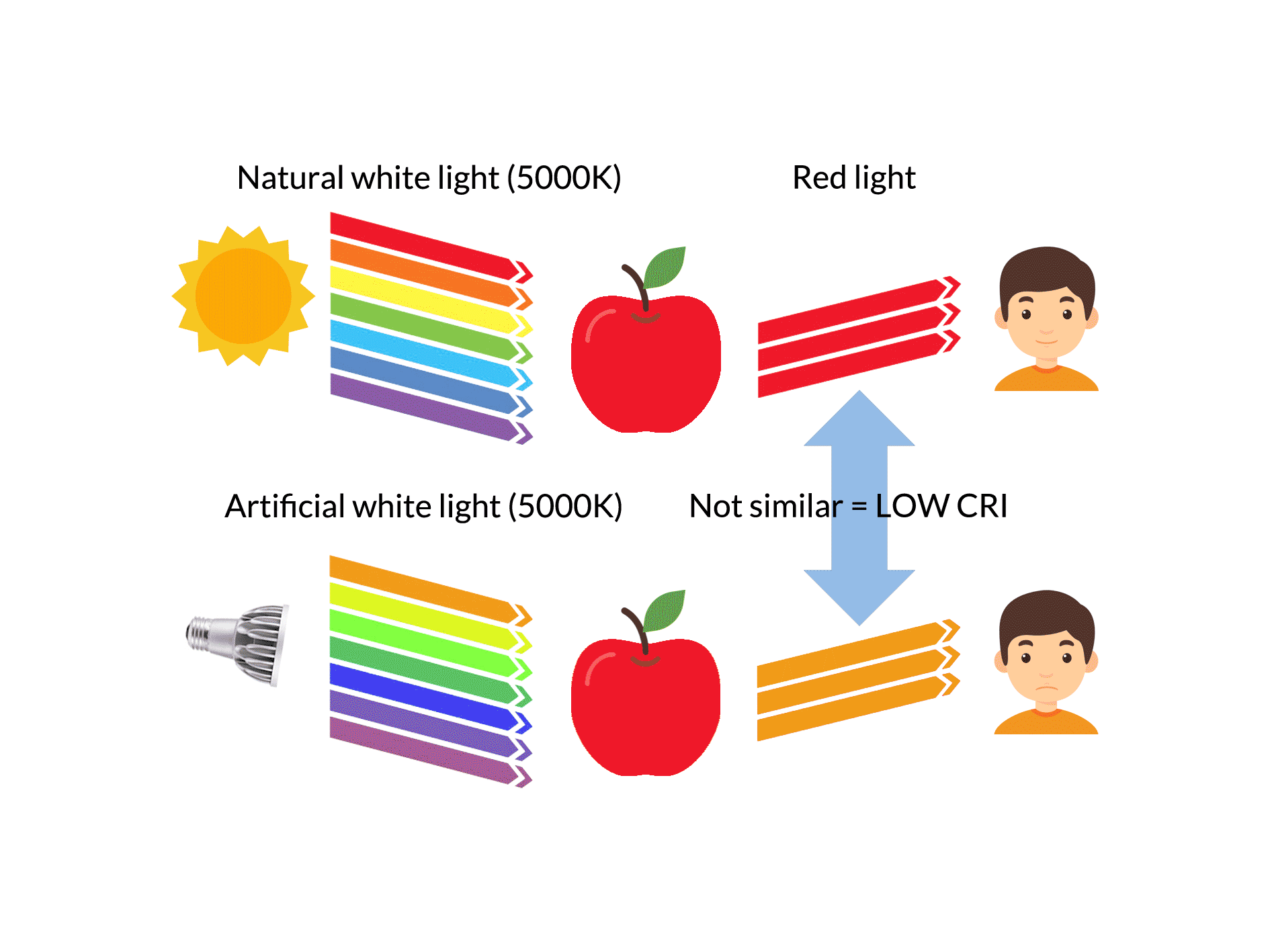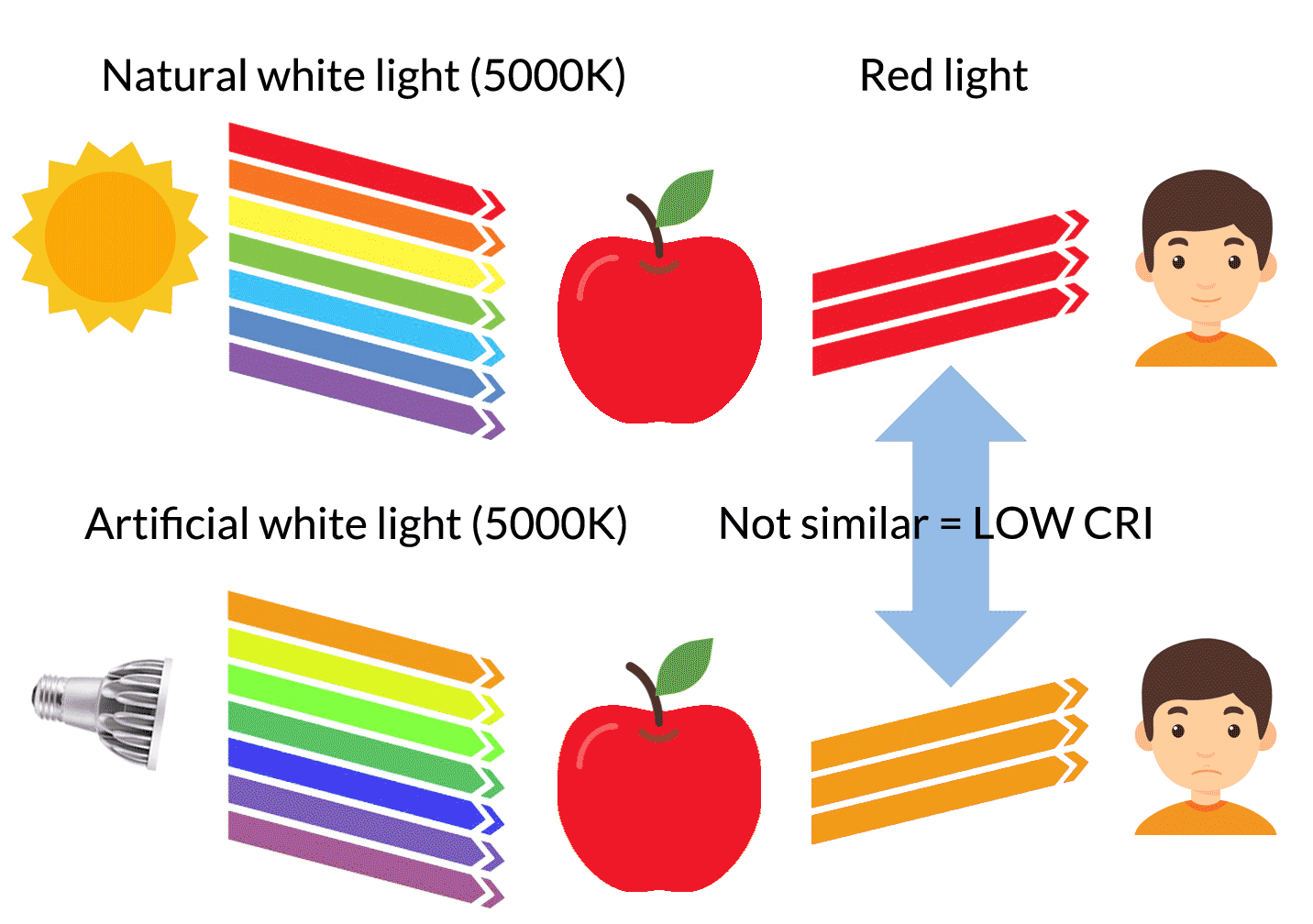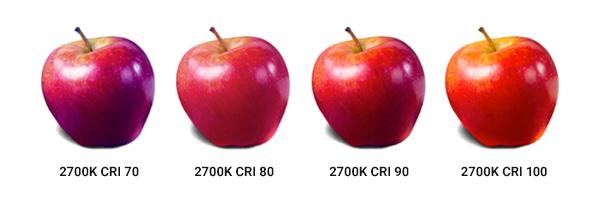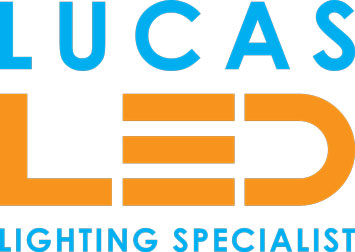What is CRI of a light?

CRI meaning
The CRI of a light is a terminology used on LED lighting, it means Color Rendering Index and it measures how accurately a light makes the colour of the objects appear to the real colour. It is very important to know this information for works where the colour accuracy is vital, like portrait studios, hospitals, medical offices…
The scale of CRI goes from 0 to 100, the better light source it is the 100 CRI, between 85/90 it’s a good source, 90 is excellent. The colour temperature and the hue of the light are the things that change the CRI of a light. To achieve a light of CRI of 100 you will need a 2700K warm colour temperature, from 75 to 90 CRI the light will be closer to 5000K.
Color Rendering Index was created by the International Commission on Illumination
The International Council on Illumination (CIE), a committee that develops lighting standards, developed CRI to describe how accurately a light source reflects the true colours of things, people, and surroundings. Based on the correlated colour temperature (CCT) of the light that is being evaluated, reference lights are chosen.
CRI RANGES:

95-100: Phenomenal colour rendering. The colours are shown as they should, showing their true colours. It is usually used in production sets, retail stores, printing and paint shops, art galleries…
90-95: Great colour rendering. It makes the colours look beautiful, vibrant, and very saturated, it generates great and comfortable lighting for different areas.
80-90: It’s a good colour rendering, even for commercial uses, it shows the colours not very saturated as they should be.
Below 80: It’s a poor colour rendering, the colours may look desaturated and maybe unidentifiable between similar colours, this light is not for commercial uses.

As we said before, high CRI is important for photography, retail stores, groceries, art shows and galleries…
How is CRI tested?
A special machinery is used for CRI testing, during this test, the machine measures the light spectrum of a light and is analysed in 8 different colours, named R values, from R1 to R8.
The colour is scored from 0 to 100 based on how the colour is rendered in comparison with a “perfect” light or reference.
If the light source's CCT is less than 5000 Kelvin, the reference light is a blackbody (incandescent), and if it is more than 5000K, the reference light is daylight. The average chromaticity differences are deducted from 100, and the result is the light source's CRI. A light source's colour rendition is very comparable to that of its reference light when the CRI is near to 100. Fluorescent lights normally have a CRI number in the lower 60s or below, while LED CRIs can range from 70 to 100. High-intensity discharge lights typically have a CRI rating close to zero. A high-CRI light strip, recessed illumination, globe bulb, or tube light can render colours accurately.
Light Testing of a 97 CRI light

Light Testing of a 81 CRI light

CRI has been used since 1937, so there are more types of measurement more modern than this one, but CRI is very trustworthy.
Other measurements are:
CRI - Color Rendering Index – How closely the observed light can render colours like the sun, using 8 colour samples.
Fidelity Index (TM-30) – How closely the observed light can render colours like the sun, using 99 colour samples.
Gamut Index (TM-30) – How saturated or desaturated colours are (aka how intense the colours are).
Colour vector Graphic (TM-30) – Which colours are saturated/desaturated and whether there is a hue shift in any of the 16 colour bins.
CQS - Color Quality Scale – An alternative to the unsaturated CRI measurement colours. There are 15 highly saturated colours that are used to compare chromatic discrimination, human preference, and colour rendering.














